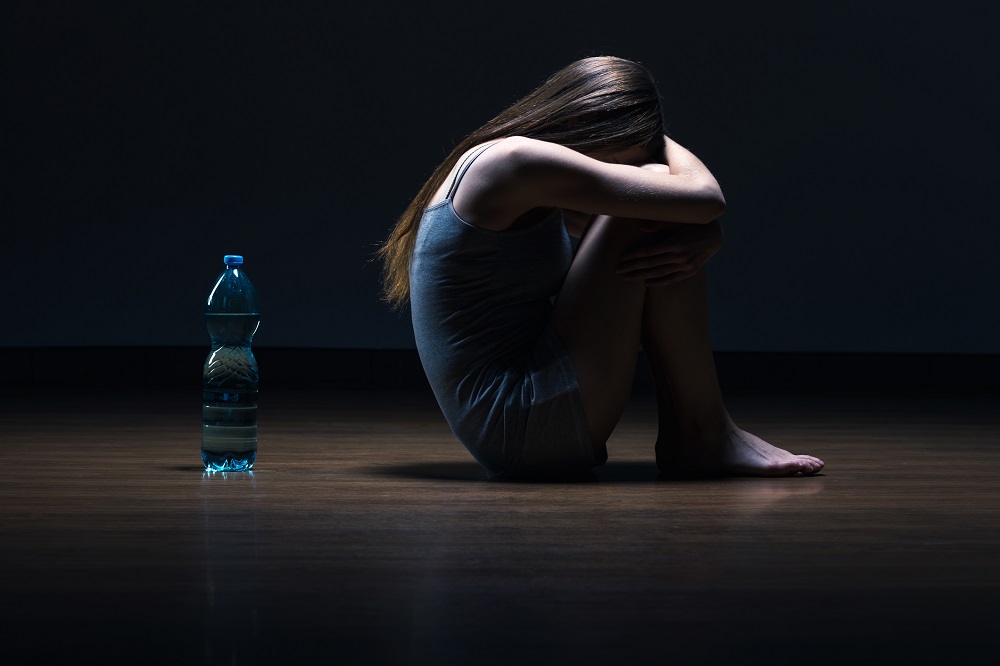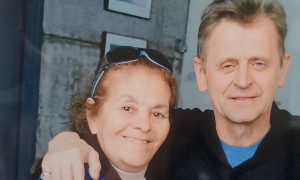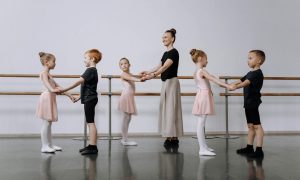Conflicting ideas are rampant in the lives of pre-teens and teens – they often hear completely different messages from the authority figures in their life than, say, what advertisements and media are teaching them. These clashing concepts can make it very hard for youth to discern the truth.
One of the hardest topics to reconcile is what’s healthy and what’s not. As this idea of “health” is so interconnected to their perception of “beauty”, truths often get twisted and lines frequently get blurred. It’s especially tough for female student dancers to grasp healthy practices and have a positive body image. Their vulnerability to mainstream beauty suggestions and poor health advice is hazardous – not to mention their serious susceptibility to the comparison culture prolific on social media.
But what happens when a trusted dance instructor or studio owner encourages young dancers to reduce their food intake or follow a diet regime? Is that harmful?
Here’s another question: What if a dance teacher just passes along some of their personal tips on eating habits and watching one’s weight? Is that really such a big deal?
The short answer to both these questions is yes, these practices are harmful. According to the specialists at Youth Protection Advocates in Dance (YPAD), when a dance teacher or studio owner uneducated in nutrition chooses to advise impressionable young dancers on diet, there can be a lot of negative consequences.
To further dissect this topic, Dance Informa talked with official dieticians, an adolescent psychologist, an eating disorder survivor and a former studio owner.
The Issue: Are young dancers really being told to diet in this day and age?
Following all the waves of cultural feminism over the last century and current developments in “full-figured” body pride, it might be hard to believe that in this day and age dance teachers and studio owners could still be enabling and even encouraging the skinny, food-fearing ballerina stereotype in their training centers. Yet, it happens. YPAD Advisory Panel Member Colleen Werner knows firsthand. She recalls how her studio’s culture caused her to struggle with body hatred and seriously influenced her low body image, which led to an eating disorder.
“As I became more serious about dance, I noticed that the dancers whom teachers gave the most attention to also happened to be the thinnest dancers,” Werner says. “While these dancers were also very talented and deserved the attention, there were also extremely talented dancers of other body types who were overlooked by teachers. I started to notice this, and I felt that if I wanted to get attention from my teachers, I needed to change my body.”
Although she now knows what needed to change wasn’t her body but rather “the narrative the dance world holds about different body types”, that definitely didn’t occur to her at the time.
“As I started to lose weight, I received more attention from my teachers,” she shares. “I also received compliments on how my body was changing. These compliments served as positive reinforcement/fuel for my eating disorder. Because people were complimenting what I was doing, it made me believe that it was healthy and okay, even though it was far from healthy. I constantly felt lightheaded in class; however, since I was getting closer to the ‘ballerina body’, I received praise. This was very dangerous because it continued to fuel what I was doing. It also made me feel like the only way I could continue to receive praise from the people around me was by continuing to change my body.”
Looking back, this change in her physical shape was not only bad for her development, but it actually hindered her movement. She reflects, “It’s really sad because my weight had nothing to do with my dance ability. In fact, by not fueling my body properly, I was actually hindering my ability to dance better because I didn’t have the energy and strength to perform to the best of my ability.”
Research data shows that Werner is not alone. Many young girls (and boys) are still being subtly or not so subtly encouraged to be skinny – which is often very different than being truly healthy. According to the National Eating Disorders Association, dieting is a common link to eating disorders, so even just reducing food intake is a dangerous and slippery slope. Studies show that 35 percent of “normal dieters” progress to pathological dieting. Of those, 20-25 percent progress to partial or full-syndrome eating disorders.
Former YPAD dietician and dance/gymnastics mom Jennifer Rogers, MS, RDN, LD knows all too well how many environments today are still encouraging teens to reduce food intake.
“One of the biggest issues we see in the dance industry today regarding nutrition and body positivity is over-restriction of intake or calories to achieve a certain body type, which, in turn, many times leads to injuries that could be prevented,” Rogers comments. “As the mother of a competitive gymnast and dancer, I have definitely seen misinformation given to kids regarding ‘best practices’ recommended by even some of the most seasoned dance professionals.”
YPAD’S new official dietician Emily Harrison, MS, RD, LD – who is also the Dance Informa nutrition columnist – is a former professional dancer who ran the Centre for Dance Nutrition and Healthy Lifestyles at Atlanta Ballet for six years. She now manages a private practice. She agrees with Rogers that misinformation is a real problem today.
“Misinformation is rampant in the media, social media and especially online,” Harrison says. “Too many ‘health’ blogs or books promote unsound nutrition and can lead to nutrition deficiencies and potentially be triggering to a population that has a higher than average risk of disordered eating. I’ve been working in the dance world for over 25 years. In the larger dance world, I have occasionally heard of teachers and even directors telling company members or students to lose weight rapidly in an unreasonable amount of time often by any means necessary. This significantly increases their risk of injury, not to mention leading down a road toward an unhealthy relationship with food and with their body.”
Dr. Christina Donaldson, a YPAD advisory panel member and certification contributor, is an adolescent psychologist who understands the potential psychological effects of young dancers being told they should diet or restrict their food intake.
“Dancers have such a strong relationship to their body,” Dr. Donaldson says. “It is their instrument in which they are able to express themselves. When we tell dancers to diet or restrict their food intake, the danger can be that we begin to disconnect them from their bodies. The body is no longer something that they are told to nourish; instead, the message can be quite the opposite. Dieting and food restriction can lead to both psychological and biological issues.”
According to research, dieting can lead to not recognizing hunger or thirst cues, a change in brain chemistry leading to psychological disorders (such as anxiety, OCD, depression, body dysmorphia and substance abuse), and the shrinking of the heart, stomach and brain. “Sometimes the shrinking of organs is irreversible,” Dr. Donaldson warns.
So what can be done? Harrison pleads, “We need to give dancers the education and tools to be able to see through the rhetoric.”
Rogers points out that over the years, much has been learned on the true nutrition needs of competitive athletes and dancers. There’s no excuse to plug misinformation, as there are a plethora of accessible, accurate resources today.
The Solution: Professional nutritional advice
One of the real ways the dance community can protect its youth (and its culture at large) is by insisting on research-driven nutrition education by qualified professionals.
Harrison says, “This is important because there are too many unqualified voices out there who may have a vested interest in promoting their product or diet plan. The term Registered Dietitian (RD) is a protected credential under the law and means that the person has earned at least a bachelors degree in nutrition (many like me have a masters) and has completed supervised practice in key areas of nutrition. Dietitians have to maintain licensure in most states, and they have to do continuing education.”
She continues, “On the other hand, the term ‘nutritionist’ or ‘health coach’ are not protected by law. Anyone can wake up and call themselves these labels with no training or education or at minimum a correspondence mail-away certificate. Many dietitians call themselves nutritionists, but not everyone can use the credential ‘dietitian’. I know it’s confusing, but it’s important. Dancers should be skeptical if someone is trying to sell them something.”
It’s vital that dance teachers and studio owners, or others in leadership positions, speak out about the importance of professional nutrition education. All dance schools should consider bringing in a RN at least once a year to lead a health seminar for their students and parents, preferably one who understands the dance world. When they do, they should request that the dietitian impart 10-20 practical, healthy meal ideas and/or snack ideas to their students. This communicates to youth that it’s important to be healthy and intentional with one’s diet without fat-shaming or encouraging less food intake. It shows teens that dietitians are the best source for health advice.
Werner personally recommends seeking a dietitian who follows anti-diet and HAES (Health At Every Size) principles. “Health At Every Size is a movement that encourages the idea that health is more than a number on a scale, and that health can be found in more than one body type,” she says. “It is a body-positive approach that allows health to be found without inducing body shame.”
If it’s not possible to bring a dietitian in, though, it’s still especially crucial to locate and obtain physical resources that give sound nutrition advice. Schools need to make these resources available to dancers and their parents. (Harrison published her My Nutrition for Great Performances book and produced educational DVDs for just this reason.)
When Rogers teaches proper nutrition to dancers, she stresses adequate intake to cover the strains they are placing on their body. “We discuss certain types of foods that may help in muscle recovery, which in turn may prevent injury,” she notes.
From a psychological perspective, Dr. Donaldson reminds us, “When we can teach dancers how to care for their body, it will increase their relationship to themselves, others, as well as to their overall wellbeing. Food is food. It is fuel for our bodies. We need fuel in order to keep going. If a car runs out of gas or we put the wrong fuel in it, it doesn’t work. Same with our body. If we don’t take care of the body, then it won’t work. The mind and body are connected, and if one is out of balance, it will directly impact the other.”
Dance teachers and studio owners accepting responsibility
YPAD Advisory Panel Member and mental health therapist Katie Gatlin is a former studio owner. She explains that because adolescents can’t necessarily understand the repercussions and side effects of dieting, it’s dance professionals’ responsibility to be intentional with their words and what culture they’re creating for young dancers.
Gatlin says, “As a studio owner, I tried to avoid situations that could cause body dysmorphia, insecurity or shaming. Focusing on costumes, dance movements and class attire that harbored a body positive approach or concept was my focus. I also made sure to set an example. Having suffered from anorexia nervosa, I had various triggers but made a conscious effort to refrain from certain behaviors or comments. If I deemed it appropriate, I would share my experience with dancers. Often times, exposing a vulnerability made me more approachable.”
Overall, she advises that dance teachers should really be putting more emphasis on a student’s technique than their physical form. Gatlin says, “Focus less on a dancer’s body and more on his/her skill/talent. Drawing attention to a dancer’s body may be counterproductive and cause more insecurity.”
If a dance teacher must address a dancer’s body to, say, correct an alignment error, then they should be very mindful of their language so they don’t provoke body shame. Werner says, “For example, instead of telling a dancer to pull in their stomach, they can say ‘engage your abdominal muscles.’ Telling a dancer to pull in their stomach isn’t actually an anatomically correct statement, and can very easily induce body shame.”
Finally, it’s also important for dance teachers and directors to be consistent. They shouldn’t act like all bodies are equally valued in their studio but then turn around and treat skinnier dancers better. Gatlin summarizes, “Talk the talk and walk the walk.”
Dance parents accepting responsibility
Likewise, dance parents have a major role in this. As a dance mom herself, Rogers identifies. She says, “We are our children’s best examples, so what we say about dieting or our own body image is the best example. Framing eating and learning about best nutrition practices in a positive way is important for dancers to have a positive relationship with food and intake.”
Rogers concludes, “If a teacher or parent suspects dieting unnecessarily or following fad diets that could be harmful, this should be addressed directly and immediately to better understand the rationale that the student has.” She encourages leaders to dispel myths and offer support for healthy eating.
RESOURCES FOR FURTHER EXPLORATION:
General Nutrition/Nutrition for Kids:
–eatright.org (Academy of Nutrition & Dietetics)
–choosemyplate.org (United States Department of Agriculture)
–mayoclinic.org/healthy (Daily lifestyle guidelines for girls and boys)
Eating Disorders:
–myedin.org (Eating Disorders Information Network)
–edreferral.com (Eating Disorders Referral Information Center)
Dance Nutrition:
–dancernutrition.com (The Center for Dance Nutrition)
–iadms.org (International Association for Dance Medicine and Science)
For more information on YPAD, visit www.ypad4change.org.
By Chelsea Thomas of Dance Informa.













